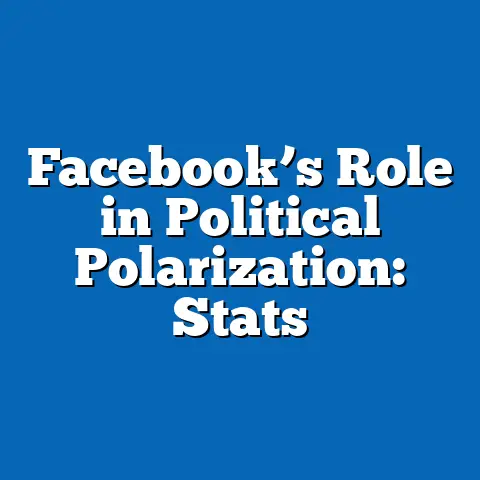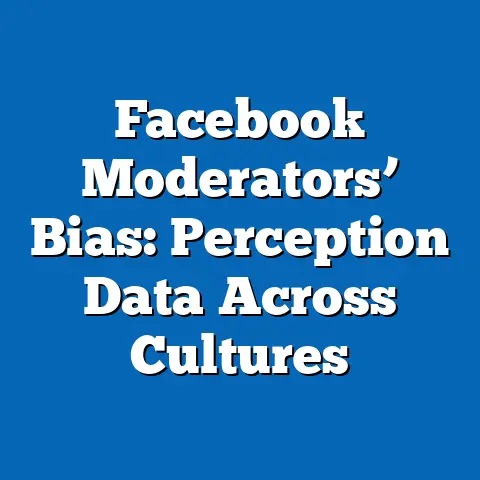Age Demographics in Facebook Scams
Facebook, with over 2.9 billion monthly active users as of 2023 (Statista, 2023), remains one of the most influential social media platforms globally, connecting diverse demographics across age, income, and geography. However, its vast reach also makes it a fertile ground for scams, including phishing schemes, fake giveaways, and romance fraud, which disproportionately target specific age groups. Understanding the age demographics most vulnerable to these scams presents a critical opportunity for targeted education, policy interventions, and platform accountability to protect users and mitigate financial and emotional harm.
Section 1: Demographic Composition of Facebook Scam Victims
Older adults, particularly those aged 55-74, represent a significant portion of Facebook scam victims. According to the Federal Trade Commission (FTC) 2022 Consumer Sentinel Network Data Book, individuals aged 60 and older reported losses of over $1.6 billion to fraud, with social media scams being a leading category. While younger users also fall victim, the financial impact on older adults is often more severe due to their higher likelihood of having savings or retirement funds targeted.
Data from a 2021 AARP survey further indicates that 27% of adults over 50 have encountered a scam on social media, compared to 18% of those aged 18-49. This discrepancy is partly attributed to the growing number of older adults using Facebook—Pew Research Center (2021) reports that 70% of Americans aged 50-64 and 50% of those 65+ use the platform, often as a primary means of social connection. Unlike younger users who diversify across platforms like Instagram or TikTok, older adults tend to concentrate their online activity on Facebook, increasing their exposure to fraudulent content.
Geographically, older scam victims are often dispersed across rural and suburban areas, where social isolation can exacerbate vulnerability. Racially, the demographic makeup mirrors broader Facebook usage, with White older adults comprising the majority of users (Pew Research, 2021), though Black and Hispanic older adults report higher rates of scam encounters relative to their population size (AARP, 2021). This suggests that cultural and linguistic targeting by scammers may play a role in victim selection.
Section 2: Core Beliefs and Values Influencing Vulnerability
Older adults often exhibit a higher degree of trust in online interactions compared to younger demographics, a trait rooted in generational norms around interpersonal communication. A 2020 study by the University of Florida found that adults over 60 are more likely to assume goodwill in online messages, especially those mimicking personal or institutional authority (e.g., fake customer service accounts). This trust contrasts with the inherent skepticism younger users, particularly Gen Z and Millennials, often display due to greater exposure to digital literacy education.
Additionally, many older adults value social connection and may prioritize maintaining relationships over scrutinizing suspicious messages. This is particularly true for those experiencing loneliness—according to the National Institute on Aging, 28% of older adults live alone, and social media becomes a lifeline for interaction. Scammers exploit this by crafting romance or friendship scams that prey on emotional needs, a tactic less effective with younger users who are more likely to have diverse offline social networks.
Core beliefs around financial security also play a role. Older adults, often on fixed incomes or with retirement savings, may be more susceptible to “get-rich-quick” schemes or investment frauds promising stability. The FTC notes that in 2022, investment scams on social media cost older adults over $500 million, highlighting how scammers align fraudulent offers with deeply held concerns about financial well-being.
Section 3: Voting Patterns and Political Engagement
While voting patterns may seem tangential to scam vulnerability, they provide insight into the broader trust and information consumption habits of older adults. According to Pew Research Center (2020), adults aged 65 and older consistently show higher voter turnout rates (71% in the 2020 U.S. election) compared to younger cohorts like 18-29-year-olds (51%). This engagement often correlates with a reliance on traditional information sources, but as older adults increasingly turn to Facebook for news—36% of those 65+ do so, per Pew (2021)—they encounter misinformation and scams disguised as political content.
Older adults also tend to lean more conservative than younger demographics, with 59% of those 65+ identifying as Republican or Republican-leaning in 2020 (Pew Research). Scammers exploit this by tailoring frauds to political narratives, such as fake fundraisers for causes aligned with conservative values or fear-based scams warning of policy changes affecting Social Security. In contrast, younger users, who lean more liberal (62% of 18-29-year-olds identify as Democrat or Democrat-leaning), are more likely to encounter scams tied to progressive causes, though their digital savviness often mitigates impact.
Political engagement on Facebook also increases exposure to scams through targeted ads and group memberships. Older adults are more likely to join community or interest-based groups (AARP, 2021), where scammers infiltrate to post fraudulent links or solicit personal information. This contrasts with younger users, who often engage in more transient, meme-based content with less personal investment.
Section 4: Policy Positions and Attitudes Toward Technology
Older adults’ attitudes toward technology and privacy often differ from younger cohorts, influencing their susceptibility to scams. A 2019 Pew Research survey found that only 52% of adults over 65 feel confident in protecting their online data, compared to 73% of 18-29-year-olds. This lack of confidence, coupled with lower adoption of security measures like two-factor authentication (used by just 40% of those 65+, per Pew), creates vulnerabilities that scammers exploit through phishing or account takeover schemes.
On policy issues, older adults generally support stronger regulations on social media platforms, with 64% believing companies like Facebook should be held accountable for user harm (AARP, 2021). However, their limited understanding of tech policies often means they are unaware of existing protections or how to report scams. Younger users, by contrast, advocate for privacy rights but are more likely to take personal responsibility for security, such as using VPNs or regularly updating passwords (Pew, 2019).
This generational divide in tech policy awareness underscores a critical intervention point. Older adults’ support for regulation suggests openness to educational campaigns, while their lower digital literacy highlights the need for user-friendly tools to flag or prevent scams directly on platforms like Facebook.
Section 5: Distinguishing Features Compared to Other Age Groups
Several distinguishing features set older adults apart from younger demographics in the context of Facebook scams. First, their lower digital literacy is a primary differentiator—while 90% of 18-29-year-olds report confidence in identifying online fraud (Pew, 2021), only 55% of those 65+ feel similarly equipped. This gap often stems from less exposure to technology during formative years, making older adults more likely to click on malicious links or share personal information.
Second, the emotional and financial stakes for older adults are often higher. A 2022 FTC report notes that the median loss for scam victims over 60 was $1,000, compared to $500 for those under 40. Younger users, while still vulnerable to identity theft or smaller-scale frauds, are less likely to have substantial assets at risk and often recover more quickly from financial setbacks.
Third, older adults’ social isolation amplifies their risk. Unlike younger users who maintain robust offline and online networks, older adults may rely on Facebook as a primary social outlet, making them more receptive to fraudulent outreach like romance scams. The Better Business Bureau (2021) found that romance scams disproportionately affect those over 55, with losses averaging $18,000 per victim.
Finally, the types of scams targeting older adults differ from those aimed at younger users. While Gen Z and Millennials face scams related to online shopping or cryptocurrency (FTC, 2022), older adults are more often targeted by impersonation scams (e.g., fake grandchildren in distress) or health-related frauds promising miracle cures. These tailored approaches exploit generational concerns and life stages unique to older demographics.
Section 6: Intersections with Other Demographic Factors
Age intersects with other factors like education, race, and income to shape scam vulnerability. Older adults with lower educational attainment are at higher risk—a 2021 AARP study found that those with a high school diploma or less were 30% more likely to fall for social media scams than college graduates. This correlates with limited access to digital literacy resources, often compounded by age-related cognitive decline.
Racially, while White older adults comprise the majority of victims due to sheer population size, Black and Hispanic older adults report higher per-capita rates of scam encounters (FTC, 2022). Language barriers and targeted cultural messaging (e.g., scams in Spanish or tied to community-specific events) contribute to this disparity. Income also plays a role—older adults on fixed or low incomes are more susceptible to financial scams promising quick returns, with 40% of victims in the lowest income bracket reporting losses (AARP, 2021).
Gender differences are less pronounced but notable. Older women are slightly more likely to fall for romance scams, comprising 60% of victims in this category (BBB, 2021), often due to higher rates of widowhood or social isolation. Older men, conversely, are more targeted by investment frauds, reflecting gendered financial decision-making norms.
Section 7: Areas of Consensus and Division Within Older Adult Demographics
Within the older adult demographic, there is consensus around the need for greater protection from online fraud. Surveys show that over 80% of those 55+ support stricter social media regulations and want platforms to proactively remove scam content (AARP, 2021). There is also broad agreement on the value of social media for connection, even among scam victims, with many unwilling to abandon platforms like Facebook despite risks.
Divisions emerge around personal responsibility and solutions. Tech-savvy older adults—often younger within the 55-64 bracket—advocate for self-education and are more likely to adopt security practices (Pew, 2021). In contrast, those 75+ or with lower digital literacy often expect external intervention from platforms or government, reflecting a generational reliance on institutional trust. These divisions highlight the need for multi-pronged approaches that address varying comfort levels with technology.
Another point of division is scam reporting. While 70% of older adults who encounter scams fail to report them due to embarrassment or unawareness of processes (FTC, 2022), those with higher education or social support are more likely to seek help. This suggests that stigma and isolation create uneven outcomes even within the same age cohort.
Section 8: Historical and Social Context
The vulnerability of older adults to Facebook scams must be understood within a broader historical and social context. Many in this demographic grew up in an era of face-to-face communication and institutional trust, with limited exposure to digital technology until later in life. The rapid adoption of social media in the 2000s and 2010s—often spurred by a desire to connect with family—left little time for older adults to develop the critical skills needed to navigate online risks, unlike younger generations raised with internet access.
Socially, the aging population faces unique challenges, including loneliness and cognitive decline, which scammers exploit. The U.S. Census Bureau (2020) projects that by 2030, adults over 65 will outnumber children under 18 for the first time, amplifying the scale of this issue. Meanwhile, the rise of sophisticated scam tactics, such as deepfake technology or AI-generated messages, outpaces the ability of many older adults to adapt.
Historically, older adults have been targets of fraud long before social media, through tactics like telemarketing scams. The shift to digital platforms like Facebook represents an evolution of these schemes, leveraging the same psychological triggers—trust, fear, and desire for connection—but with greater reach and anonymity. This continuity underscores the need for historical lessons, such as public awareness campaigns from the 1990s, to inform current strategies.
Section 9: Patterns and Trends in Scam Vulnerability
Several patterns emerge when analyzing age demographics and Facebook scams. First, the rate of victimization among older adults has risen sharply, with reported losses increasing by 74% from 2020 to 2022 (FTC, 2022). This correlates with increased Facebook usage during the COVID-19 pandemic, when 78% of adults over 50 reported spending more time online (Pew, 2021).
Second, seasonal trends show spikes in scams targeting older adults during holidays, when loneliness peaks and fraudulent charity or gift card schemes proliferate. The BBB (2021) notes a 40% increase in reported scams in November and December, often targeting emotional triggers unique to older demographics.
Third, the trend of underreporting persists, with only 1 in 10 older victims notifying authorities or platforms (FTC, 2022). This underreporting skews data and limits the ability to track scam prevalence accurately, suggesting that true victimization rates are likely higher than documented.
Comparatively, younger demographics show declining victimization rates for traditional scams due to increased awareness, though they face rising risks from newer frauds like cryptocurrency schemes. This generational divergence highlights the need for age-specific interventions rather than one-size-fits-all solutions.
Second, educational campaigns must prioritize digital literacy for older adults, leveraging trusted community spaces like senior centers or libraries. Programs like AARP’s Fraud Watch Network, which reached 2 million seniors in 2022, demonstrate the efficacy of tailored outreach. Partnerships with government agencies could scale these efforts, especially in rural areas with high victim rates.
Third, policymakers should consider stricter regulations on social media platforms, aligning with older adults’ support for accountability. Legislation mandating transparency in ad targeting—often a vector for scams—could reduce exposure, as could incentives for platforms to prioritize user safety over engagement metrics.
In conclusion, older adults’ susceptibility to Facebook scams reflects a complex interplay of demographic, psychological, and technological factors. Their distinct characteristics—lower digital literacy, higher trust, and social isolation—set them apart from younger users, necessitating targeted interventions. By leveraging data on age demographics, core beliefs, and behavioral patterns, stakeholders can build a safer digital environment for all users, ensuring that the benefits of platforms like Facebook are not overshadowed by preventable harm.






